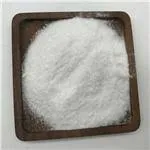The Chemicals Used in Water Treatment
Water is an essential resource for life, and ensuring its quality and safety is crucial for public health and environmental sustainability. Water treatment processes typically employ a range of chemicals to purify water and remove contaminants, making it safe for consumption and use. Understanding the chemicals involved in water treatment can shed light on how we can improve water quality worldwide.
One of the primary chemicals used in water treatment is chlorine. Chlorination is a widely used disinfection method that helps eliminate harmful bacteria, viruses, and parasites from water supplies. Chlorine is effective at lower concentrations and acts quickly to kill pathogens. However, it can react with organic matter in water to form disinfection by-products (DBPs), such as trihalomethanes (THMs), which may pose health risks. Because of this, water treatment plants often monitor chlorination levels closely to balance disinfection effectiveness while minimizing potential by-products.
Another important chemical used in water treatment is coagulants. Coagulation is the process of clumping together suspended particles, such as dirt and debris, so they can be removed from the water. Aluminum sulfate, commonly known as alum, is one of the most frequently used coagulants. When added to water, alum forms a gelatinous precipitate that traps impurities. After coagulation, the flocs settle to the bottom of settling tanks, allowing clearer water to be extracted for further treatment.
Lime is another chemical commonly used in water treatment. It serves multiple purposes, including alkalinity adjustment, pH control, and softening water (removing hardness-causing minerals like calcium and magnesium). Lime treatment can also facilitate the removal of certain heavy metals, making the water safer for consumption. The process of lime softening involves adding lime to the water, which causes calcium and magnesium to precipitate out, resulting in “softened” water.
what are the chemical used in water treatment

Sodium bisulfite is often employed as a dechlorination agent, particularly when water is treated with chlorine and needs to be dechlorinated before being released back into the environment. This substance neutralizes chlorine residues, reducing the impact on aquatic life. Dechlorination ensures that treated water meets regulatory standards and minimizes harm to ecosystems.
Phosphate is utilized in water treatment to inhibit the growth of corrosion inside pipes and equipment. It plays a role in protecting infrastructure by forming a protective layer on the surface of metal components, thus preventing leaching of heavy metals and other harmful substances into the water supply.
In response to concerns about harmful microorganisms such as Cryptosporidium and Giardia, some water treatment facilities employ advanced oxidation processes using ozone. Ozone is a powerful oxidant that can neutralize a range of pathogens and organic pollutants. Its use in water treatment has gained popularity due to its effectiveness and the fact that it does not produce harmful by-products like chlorine.
Activated carbon is another critical component of water treatment systems. It is widely used for adsorption processes, where it captures impurities and contaminants from water. Activated carbon can effectively remove chlorine, tastes, odors, and many organic compounds, leading to improved water quality. While it is not a chemical in the traditional sense, its role in the treatment process is essential for enhancing the aesthetic qualities of drinking water.
In conclusion, a variety of chemicals play vital roles in water treatment processes, each serving specific functions to ensure that water is safe and clean for consumers. Chlorine, coagulants like alum, lime for pH adjustment and softening, sodium bisulfite for dechlorination, phosphates for corrosion control, ozone for pathogen removal, and activated carbon for filtration all contribute to producing high-quality water. As pollution and contamination of water sources continue to be global challenges, understanding and optimizing the use of these chemicals in water treatment becomes ever more critical. Continuous research and advancements in water treatment technologies will help ensure that safe drinking water remains accessible to everyone around the globe.

